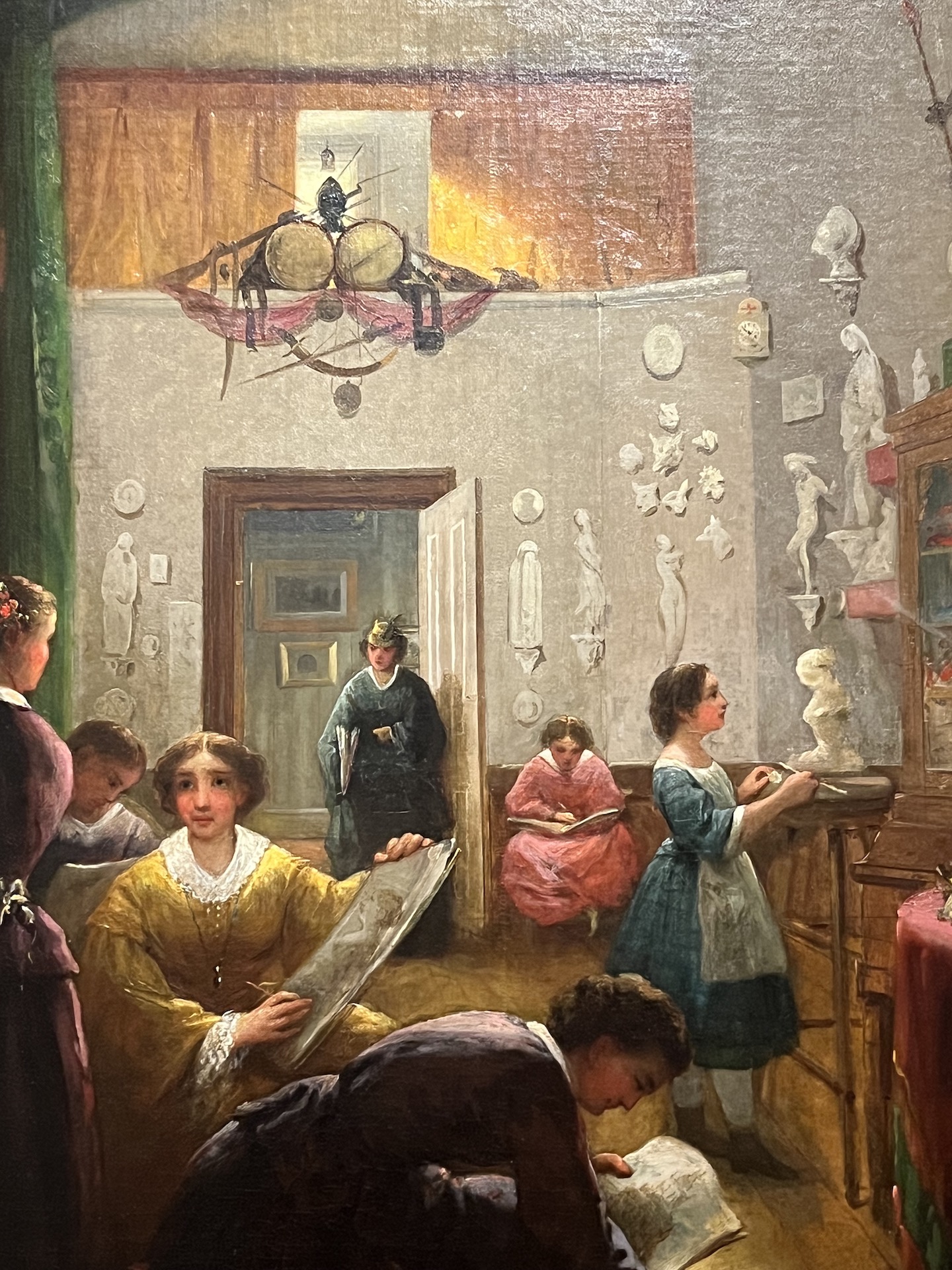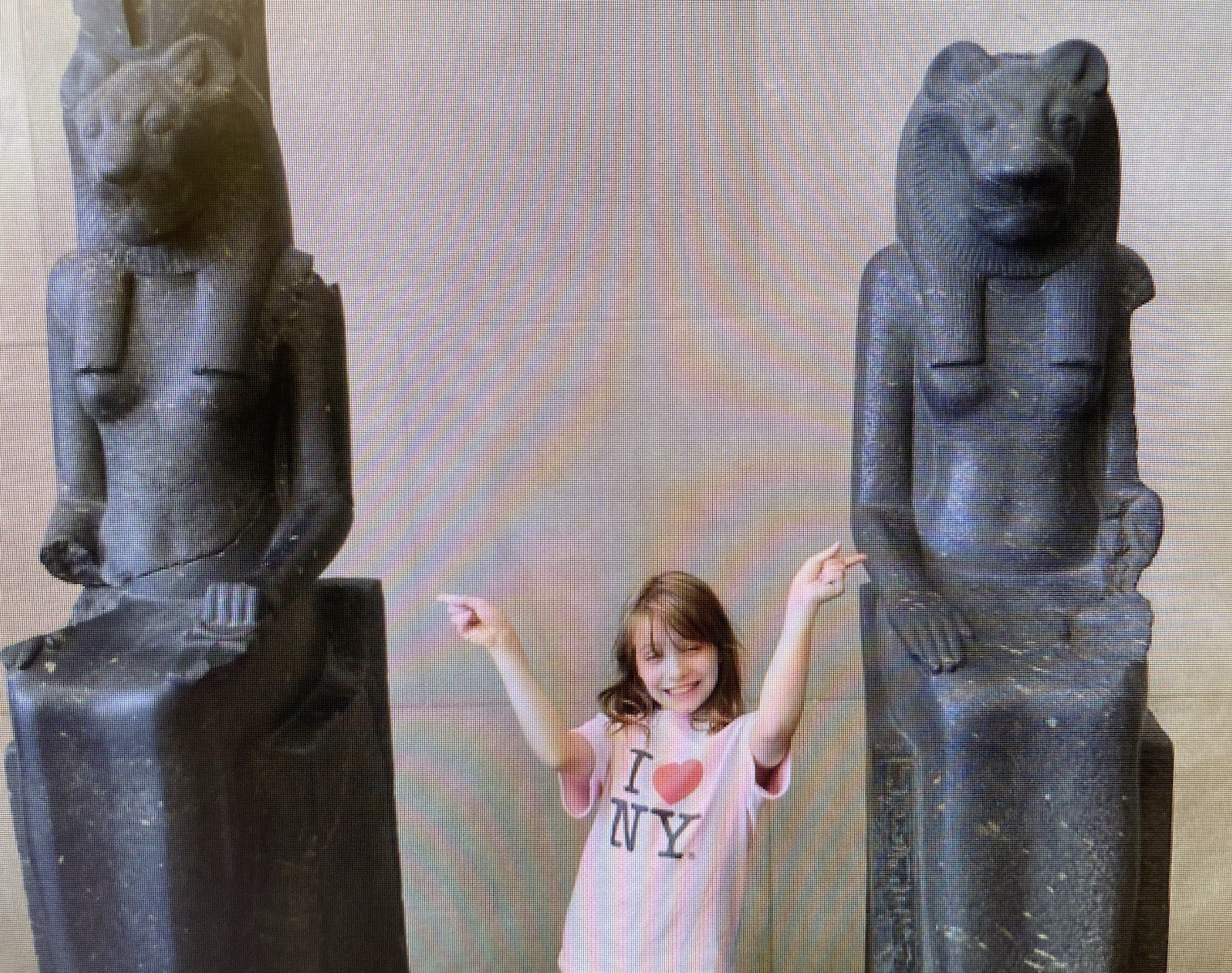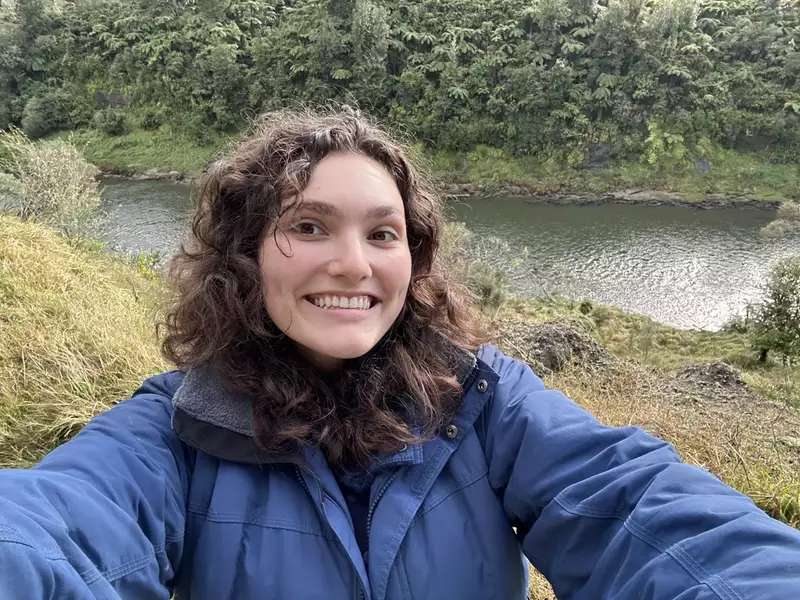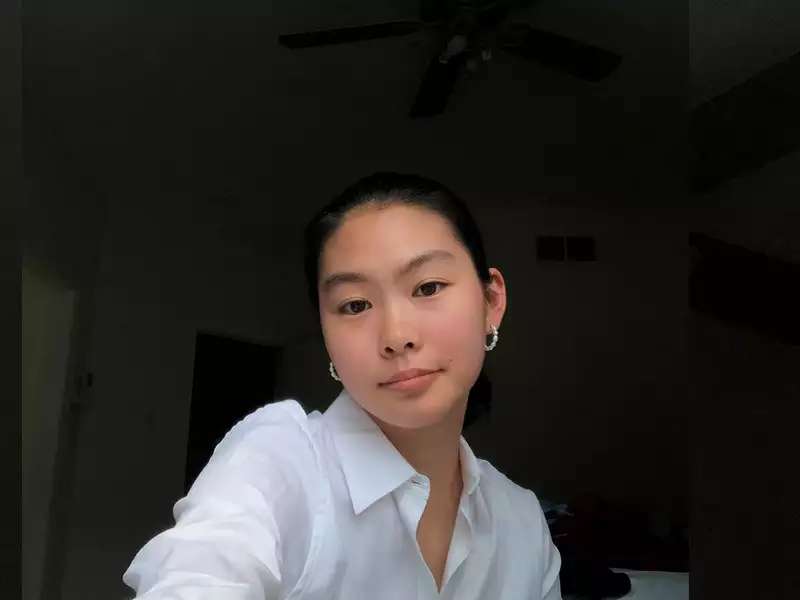No one knows why they were chosen to work for the Metropolitan Museum of Art. I certainly chalk it up to luck that my supervisor, Thayer Tolles, the Met’s Marica F. Vilcek Curator of American Sculpture and Paintings, saw my application to intern for the iconic museum at the right time. I’m also grateful to my art history major advisor, Alexander Alberro, Virginia Bloedel Wright ’51 Professor of Art History, who supported me through the application process.
On my first day at the Met, I was given my own desk and research station in the library of the American Wing’s offices. The encouraging staff even gifted me a small plaster cast of Frederick Roth’s Columbia lion statue from storage to keep on my desk during my internship.
As a curatorial intern, I helped Tolles — whose office was down the hall from my own — with all of her ongoing exhibition planning and development. This included exhibition projects that were both at the beginning or end of development phases. When I wasn’t watching an installation or helping to review gallery labels and audio guides, I spent my time at the museum digging through archives and research portals of the Thomas J. Watson and American Wing libraries.
While I was digging through some random archive at my desk one day, Tolles walked in and handed me a piece of paper with information on Louis Lang’s painting Art Students. The work was being prominently displayed in the exhibition “New York Art Worlds, 1870-1890,” and she wanted me to take a stab at a question that had not been solved by any past interns or staff: Where — and by extension, when — was this painting depicting?
Tolles gave me the object file and a former intern’s research, saying that it wasn’t a priority but if I found anything she would appreciate it. Every time I reported for my internship, I would search little by little through the different newspapers and books in the museum’s archives to find out what Lang was doing around the 1860s. With another stroke of luck — on the last day of my first semester — I found what I needed to crack the code.
Paintings often record bits of history and life. In the case of Art Students, which can be found of the Met's mezzanine floor as part of the ongoing exhibition, it's life within the art world of the mid-19th century. Art researchers rely on records, letters, and early photographs, and being able to match a painting with this kind of corroborating information provides another avenue of understanding and discovery.
Painting shouldn’t usually be taken as a direct translation of an artist’s vision for their artwork, but it was through the visual information [such as the furniture, props, and recognizable sculptures] in the painting that I was able to discover Lang’s previously unknown studio location — almost certainly in a building that once stood at 1193 Broadway, near West 28th Street. It was in this studio that he offered art and painting lessons to the young women of 1860s New York.
Without Lang’s act of recording this kind of information in the painting, I am unsure if I would have thought to type the search terms “Louis Lang” and “art instruction” into a database. This discovery added new information to the early history of American women painters and their education. Now, we can use this knowledge as another starting point to identify or place more of those women who attended Lang’s classes — and who tried to be some of the first female artists to break into the confined New York art scene of the middle to late 19th century. Eventually, as the pieces came together, my collaborative research with Tolles culminated in a “Close Look” feature published on the Met’s website.
Surprise and Gratitude
It was with Tolles’ mentorship that I learned to navigate the evolving nature of art history. I was surprised that I was able to use a painting as a form of concrete historical evidence and that looking at a painting could also be its own window into new knowledge. I will never forget the moment I found the right newspaper that matched up with the painting. I never thought that, as an intern, I would do any kind of impactful art historical research for such a celebrated institution. I am still shocked that I discovered anything significant at all. It just shows how the act of looking closely — the kind that sometimes takes months — can facilitate important discoveries.
I’ve known that I wanted to pursue art history since I was in high school because of the cultural institutions available to me growing up in Charleston, South Carolina. Being a part of Barnard’s Department of Art History has affirmed and cultivated my ambitions. Every single one of my professors, both at Barnard and Columbia, have gone out of their way to have conversations with me after class and offered ways I could engage with art. Being able to discuss what I was working on at the Met when returning to a classroom setting with expert professors in American art history truly enriched my internship experience.
— REPORTING BY TARA TERRANOVA ’25







